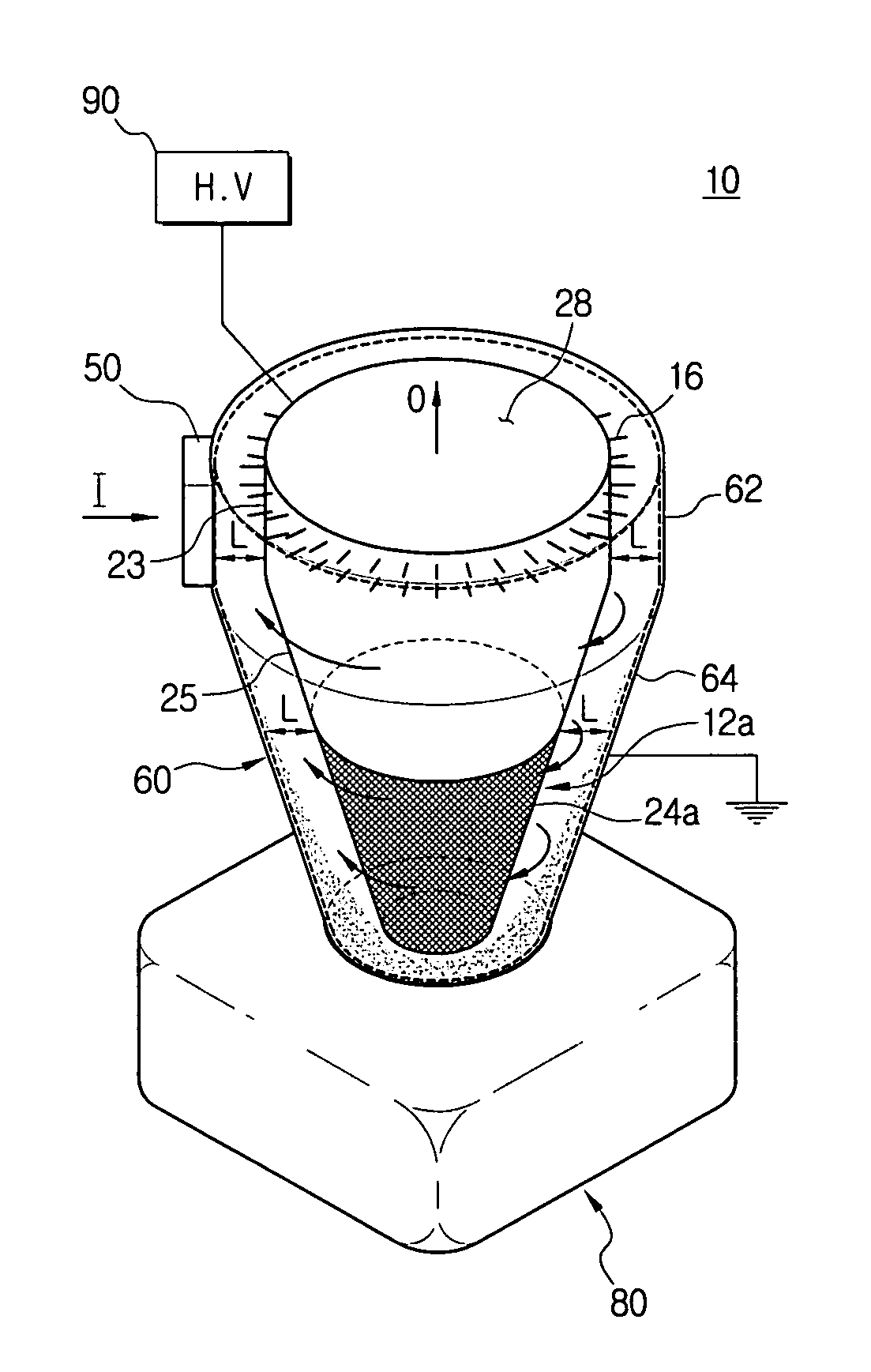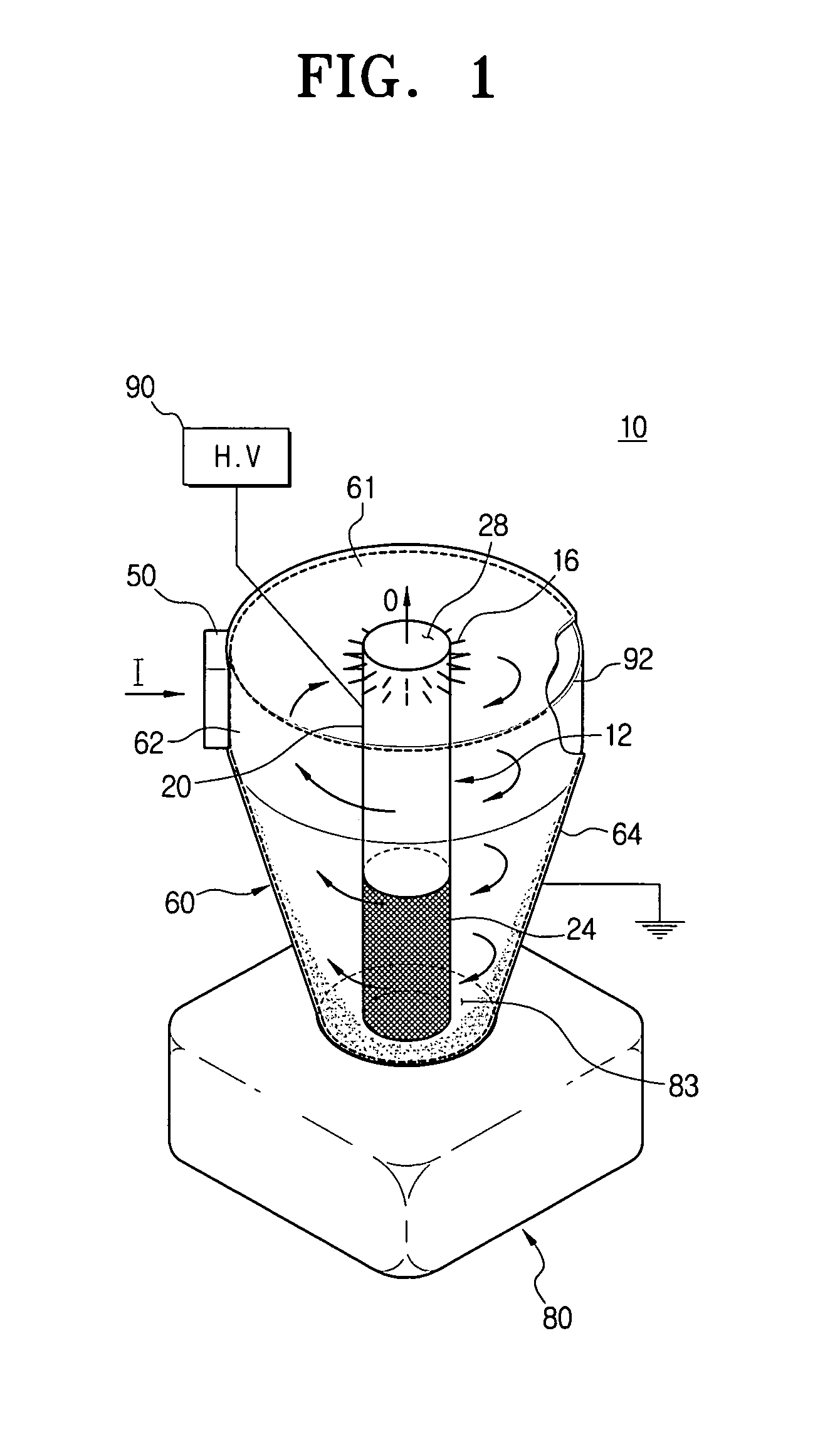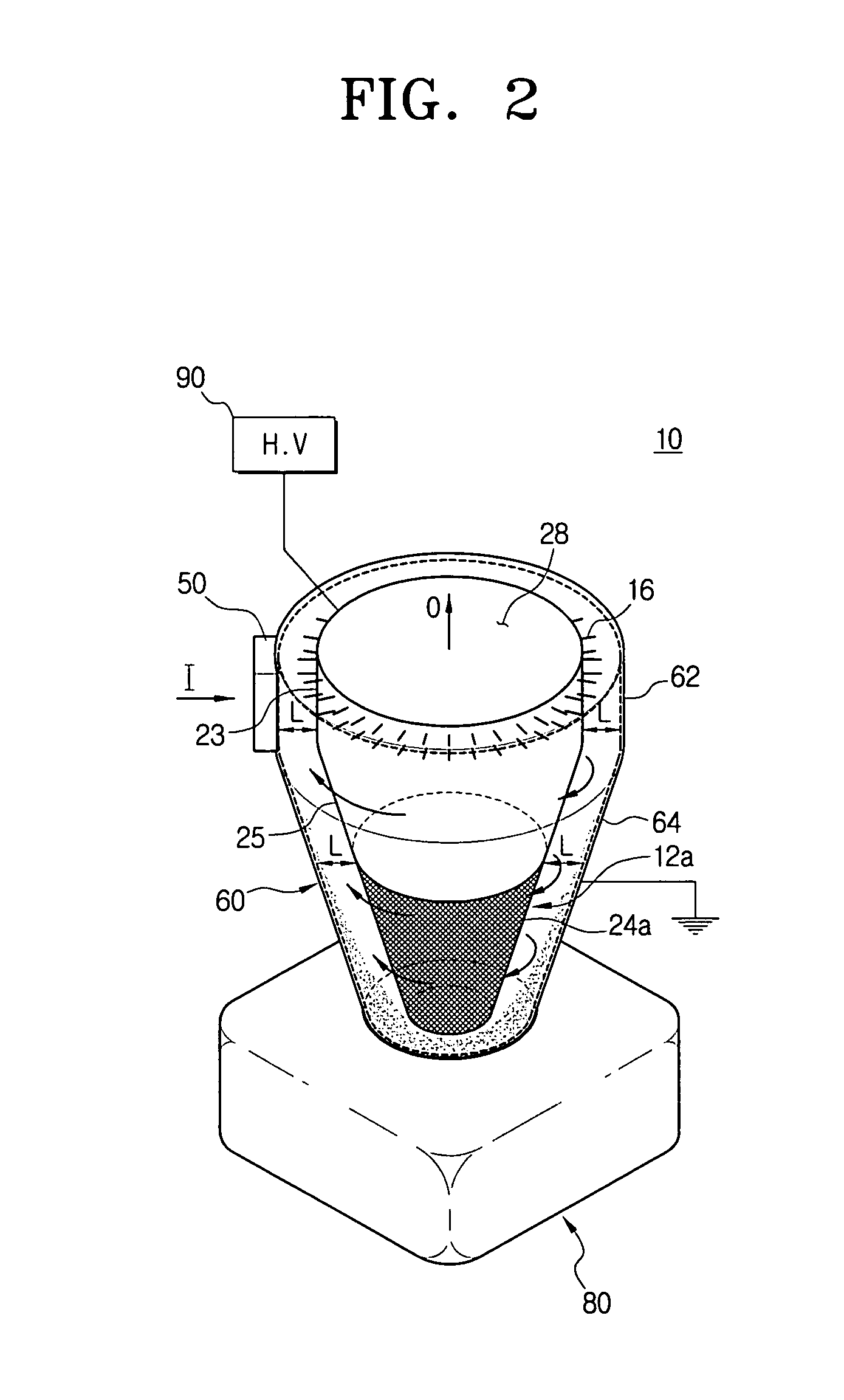Cyclone dust-separating apparatus with discharge electrodes
a technology of discharge electrodes and dust separation apparatus, which is applied in the direction of separation process, filtration separation, auxillary pretreatment, etc., can solve the problems of dust accumulation or spark on the support rod, and achieve the effect of uniform electrical field
- Summary
- Abstract
- Description
- Claims
- Application Information
AI Technical Summary
Benefits of technology
Problems solved by technology
Method used
Image
Examples
first embodiment
[0022]The preferred embodiments of the present disclosure are explained in greater detail below with reference to the attached drawings. FIG. 1 is a partially incised perspective view schematically showing the cyclone dust-separating apparatus of the present disclosure.
[0023]Referring to FIG. 1, the cyclone dust-separating apparatus 10 comprises an air intake pipe 50, a cyclone body 60, a dust container 80, an air exhaust pipe 12, a plurality of discharge electrode members 16, a grounding member 92, and a high voltage power source 90.
[0024]The air intake pipe 50 is installed on one side of the cyclone body 60, and functions as a passage through which fluid flows into the cyclone body 60 from outside. The air intake pipe 50 may be round, quadrangular, or other shapes, but the embodiments described here have a quadrangular pipe.
[0025]The cyclone body 60 comprises a cylindrical section 62 and a tapering section 64, which tapers downwards in an inverted cone shape, and is an area into w...
second embodiment
[0033]FIG. 2 is a drawing showing the cyclone dust-separating apparatus of the present disclosure, and differs from FIG. 1 only in the form of the exhaust pipe.
[0034]Referring to FIGS. 1 and 2, the air exhaust pipe 12a has a cylindrical section 23, and a tapering section 25 which decreases in diameter towards the bottom, so the form is consistent with the cyclone body 60. The air exhaust pipe 12a conducts electricity and is connected to the high voltage power source 90, so it functions as a discharge electrode, and the distance L between the outer surface of the air exhaust pipe 12a and the grounding member 92 installed on the inner surface of the cyclone body 60 is uniform, regardless of the position in the cyclone body. In other words, referring to FIG. 2, the distance L between the cylindrical section 23 of the air exhaust pipe 12a, performing the role of a discharging electrode, and the cylindrical section 62 of the cyclone body 60 is equal to the distance L between the sloped s...
third embodiment
[0035]FIG. 3 is a drawing of only the air exhaust pipe 112 of the The remainder of the dust-separating apparatus is identical in form with the embodiment of FIG. 2 described above.
[0036]Referring to FIGS. 2 and 3, the air exhaust pipe 112 in the third embodiment functions as a conductor, and the entire air exhaust pipe 112 is formed of mesh. The high voltage power source 90, referring to FIG. 2, and other components in the dust-separating apparatus are identical to those described for the other embodiments. As a result, air can pass through all parts of the air exhaust pipe 112, but the air exhaust pipe 112 is negatively charged, so dust is driven towards the grounding member 92. The cyclone body 60 comprises a cylindrical section 120 and a tapering section 122, as in the preceding embodiments, and the distance L, in FIG. 2, between the mesh air exhaust pipe 112 functioning as a discharge electrode and the grounding member 92 installed on the inside of the cyclone body 60 is consis...
PUM
| Property | Measurement | Unit |
|---|---|---|
| voltage | aaaaa | aaaaa |
| area | aaaaa | aaaaa |
| strength | aaaaa | aaaaa |
Abstract
Description
Claims
Application Information
 Login to View More
Login to View More - R&D
- Intellectual Property
- Life Sciences
- Materials
- Tech Scout
- Unparalleled Data Quality
- Higher Quality Content
- 60% Fewer Hallucinations
Browse by: Latest US Patents, China's latest patents, Technical Efficacy Thesaurus, Application Domain, Technology Topic, Popular Technical Reports.
© 2025 PatSnap. All rights reserved.Legal|Privacy policy|Modern Slavery Act Transparency Statement|Sitemap|About US| Contact US: help@patsnap.com



